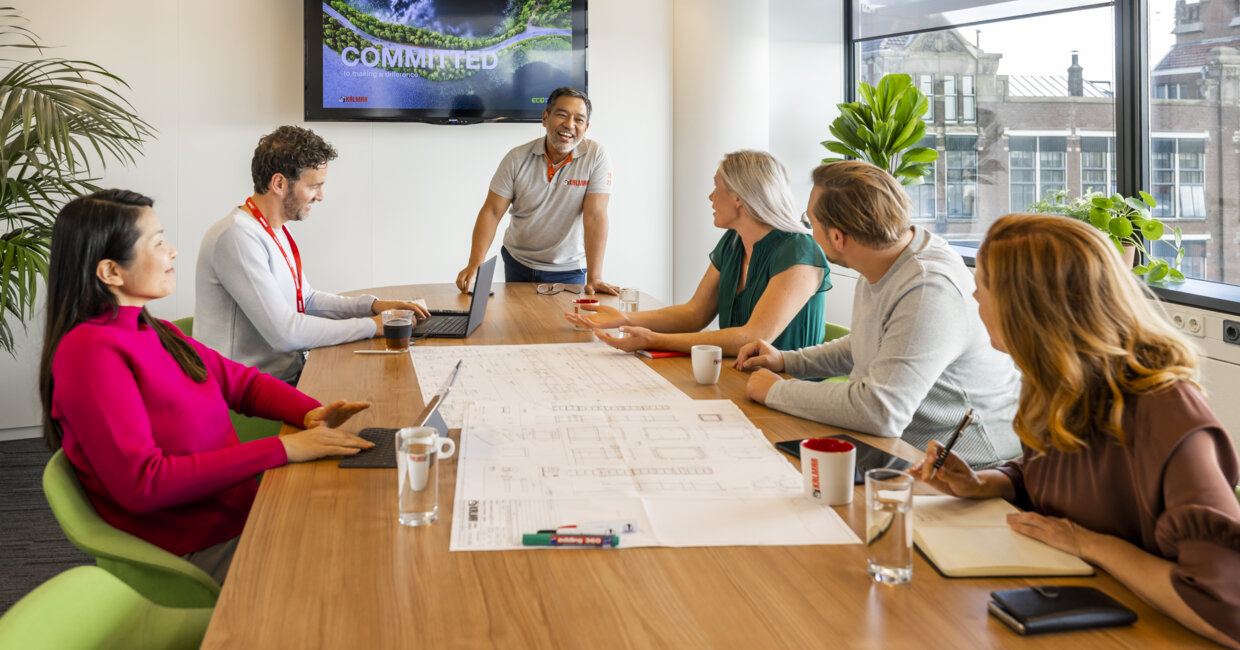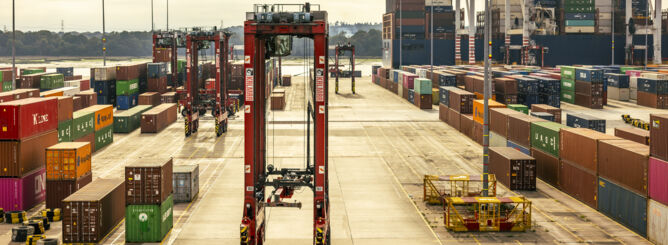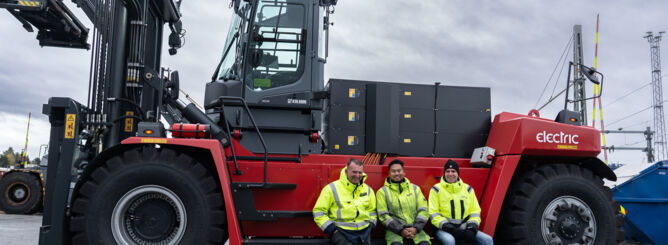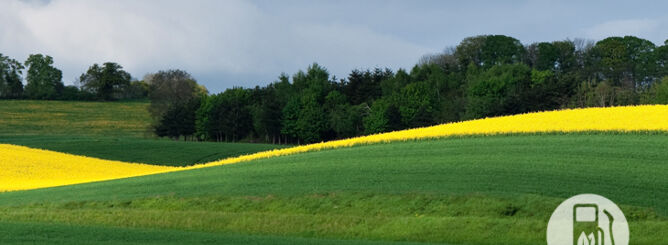Making Headway on Sustainable Sourcing
Sourcing Sustainability at Kalmar is in high gear. Read our article for a quick overview of where we’ve come from, where we’re going and our progress with Sustainable Sourcing. This article also summarises our Supplier Decarbonisation Handbook, which aims to help suppliers and associates make quick headway with their own sustainability journeys.
Benchmarking impacts
Determining the sustainability of the materials and services one sources requires measurement. We at Kalmar started by evaluating the current footprint of Kalmar suppliers (Scope 3 upstream), that of our own operations (Scopes 1 and 2), as well as the CO2 generated through use of the products we sell (Scope 3 downstream).
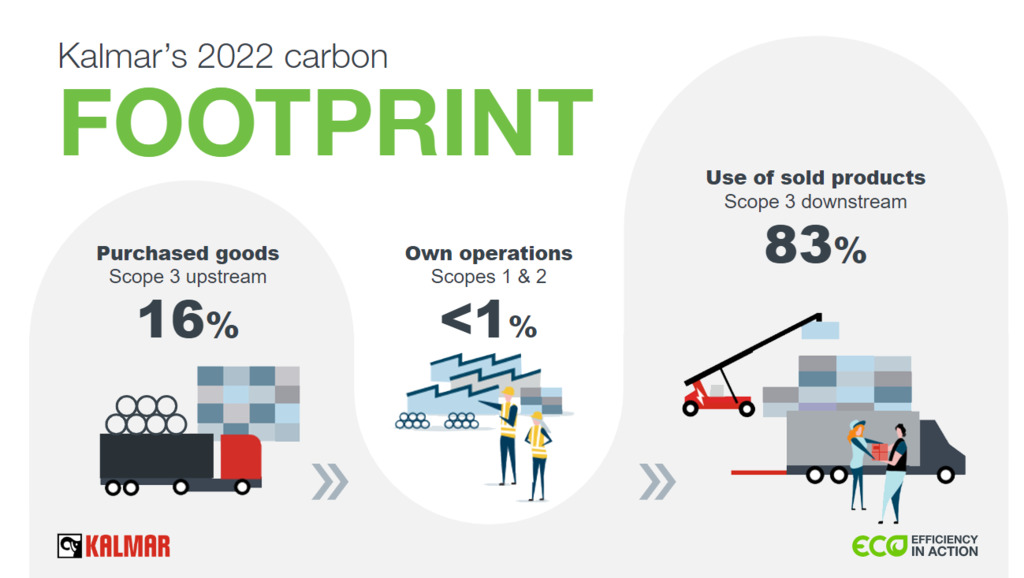
As you can see, the carbon footprint of Kalmar’s own Scope 1 & 2 operations is a small fraction of those upstream and downstream. The vast majority of emissions occur in the upstream and downstream value chain. By understanding the carbon footprint at the beginning of our products’ life cycle, starting with our suppliers, we can uncover emission hotspots and create a strong foundation for our decarbonisation roadmap. Supplier sustainability is the starting point when developing sustainable solutions for our customers.
“Kalmar has over a thousand direct suppliers, and many of those have their own upstream suppliers,” explains Marjolein Koopman, Head of Sourcing Sustainability at Kalmar. “At Kalmar six categories of suppliers - steel structures, power trains, castings & forgings, electrics, hydraulics & cylinders, tires & rims - represent 75 percent of our upstream CO2 emissions. So we work with our biggest suppliers in those categories to set KPIs, look at their own suppliers, and measure their total impact.”
“Achieving sustainability is important for everyone,” emphasises Koopman. “Our suppliers and their suppliers have to demonstrate progress in that regard. Now is a great time to get going, as we are offering to help them directly with tools such as our Supplier Decarbonisation Handbook.”
Engaging with our suppliers
How do you get suppliers on board with your sustainability program? You engage with them!
Kalmar has created an engagement model that builds a picture of a supplier’s maturity and risks, its climate impact, and lays the foundation for emission-reduction collaboration. It’s a set of best practices that the company is excited to share with its business partners.
Engagement is a process that involves collecting detailed data on things like energy used in operations, as well as specifics around the materials that go into the products: their origin, recycled content, surface treatments, etc.
Kalmar uses this data to:
- Calculate annual CO2 emissions per supplier for products supplied. This is used for reporting purposes and for Kalmar Life Cycle Assessments
- Find emission hotspots and identify improvement actions
- Build decarbonisation roadmaps together with suppliers to future proof the supply chain
Creating policy, implementing levers
If sustainable sourcing is truly going to work, companies have to build guidelines around it and make it part of their corporate policy. That’s why sustainability and climate targets now form part of Kalmar’s supplier selection process. Coming on board with Kalmar means that targets are agreed upon and KPIs are implemented to measure progress and ensure that requirements are met.
There are several obvious emissions-reducing levers that Kalmar relies on when selecting suppliers and helping to improve existing supplier sustainability:
- Location & transportation – How far do goods have to travel, what is their path from raw materials to finished, and are they sustainably processed at each step?
- Reduce Greenhouse gases from energy usage – How much energy is used and what is the energy source? Can energy be reduced, or a better source chosen?
- Rethink packaging – Is all that plastic really necessary? What about using, for example, cardboard packaging material of goods received to create upcycled packaging for shipment?
- Surface treatments – There is a wide range of carbon footprints (and toxicity) associated with different paints, coatings and other surface treatments.
Targeting eco design
The above levers point the way towards designing products differently, which we are doing progressively. In our industry, there are four main eco design principles:
- Alternative greener materials – Kalmar has started, for example, using natural materials (rocks!) as counterweights instead of cast iron weights.
- Standardisation & modularity – Since it’s more efficient to make one model or part than 10 different models or parts, we are streamlining where possible and moving towards ‘modular’ in our equipment designs and builds.
- Material efficiency & circularity – We look at how long materials will last and what happens to them at the end of life, as well as the percentage of the entire product that can be recycled.
- Solve the steel challenge – How do you reduce the huge carbon load of steelmaking? Companies have been asking this question for some time and Kalmar has an answer. We are working closely with SSAB, a steelmaker that has developed a carbon-free nitrogen-based process in which the byproduct is H2O rather than CO2.
Review, refine and recommit
What’s working and what’s not? That’s a question that we ask ourselves regularly. We answer it by measuring, adjusting and ensuring that we are meeting our milestones. At the same time, we regularly recommit to and refine our corporate guidelines. Our goal is to be a carbon-neutral company and we will eventually get there. It’s just a matter of how quickly it happens.
Get the Handbook
The Supplier Decarbonisation Handbook details the basics of climate change, how to calculate your emissions, and how to go about reducing emissions at a corporate scale. If you want to reduce your company’s carbon footprint, this is the resource for you.
To learn more about key approaches to reduce value chain emissions, watch our recent webinar.
Submit the form below to request the handbook. Please, select "Other" in the "Your reason of contact" field and type "Supplier decarbonisation handbook" in the "How can we help you?" field.
